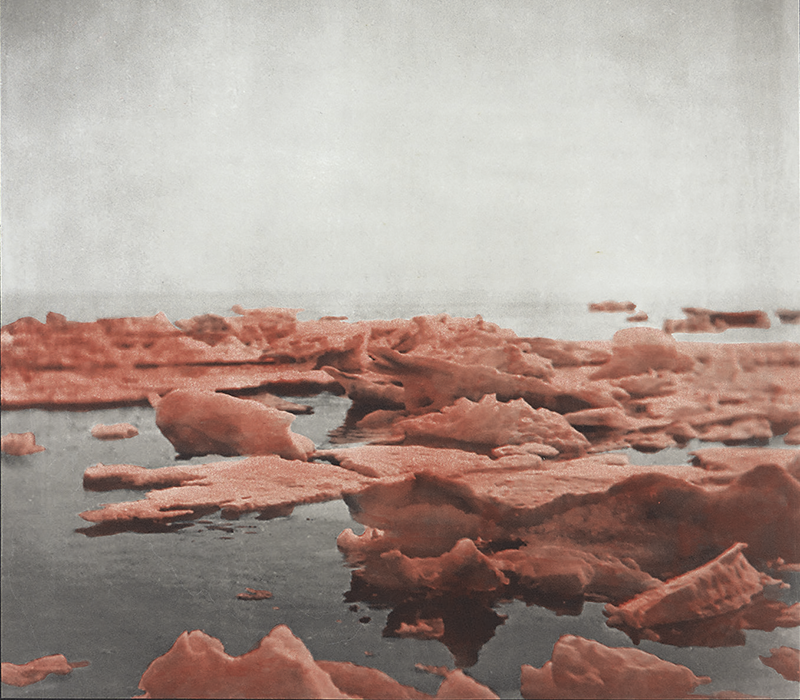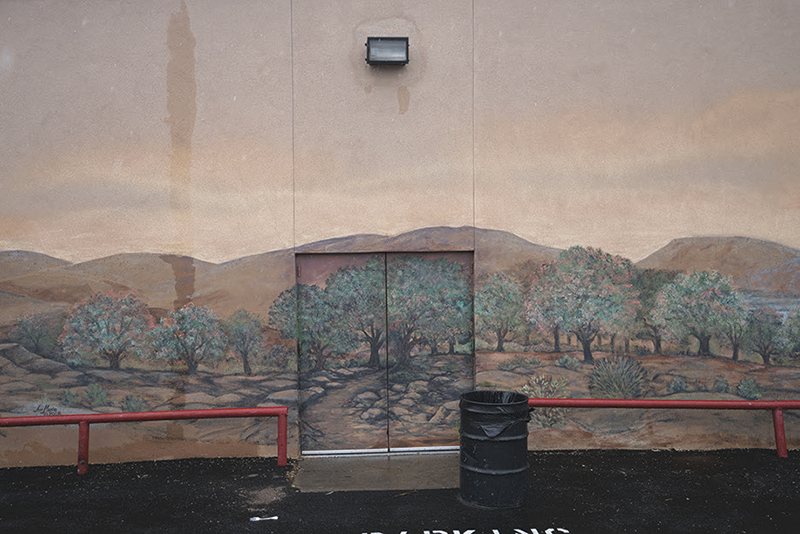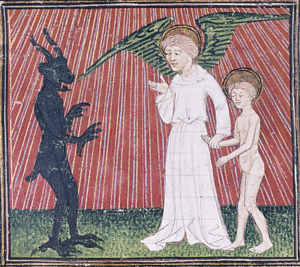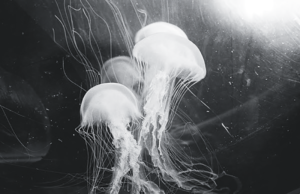
Elegy IV (detail), from the series Arctic Elegy, by DM Witman © The artist. Courtesy Klompching Gallery, Brooklyn, New York
“Don’t say that he’s hypocritical / Say rather that he’s apolitical,” Tom Lehrer sang, in 1965, of the former Nazi engineer then serving as director of NASA’s space flight center in Huntsville, Alabama. “ ‘Once the rockets are up, who cares where they come down? That’s not my department!’ says Wernher von Braun.” Von Braun makes a surprise cameo early in the composer John Luther Adams’s memoir, Silences So Deep (Farrar, Straus and Giroux, $26), as the disapproving father of Adams’s first wife, Margrit. The couple met as pupils at an all-white boarding school in Atlanta where, one night in 1970, they snuck out to attend a vigil for the anniversary of Martin Luther King Jr.’s assassination. And though Adams doesn’t mention the Lehrer number, his book offers a more meditative treatment of its central concern: How can people best use their gifts, and what are their larger responsibilities in doing so? The memoir charts Adams’s decades living in Alaska (he professes an “almost erotic” attachment to the place), his youth as a full-time environmental activist, and the lifelong development of his music, for which he won a Pulitzer Prize in 2014. It begins by setting out the verdict he reached in his thirties: “I decided that someone else could take my place in politics; and no one else could make the music I imagined but me.” That music—experimental and designed to evoke natural forms, from the Okefenokee Swamp at night to the white expanses of the Arctic—would follow only its internal dictates, since “more often than not political art fails as politics, and all too often it fails as art.”
Yet the memoir is ambiguous as to whether there’s such a thing as true autonomy, for art or individuals. Adams is laconic about his unhappy family (“Both my parents were alcoholics”); it seems he might prefer to have sprung straight from the landscape. He gets another chance, at age twenty-two, when he arrives in Alaska, a state several years younger than he is, ideal for self-invention. He embraces Thoreauvian ruggedness. His cold, dark, inaccessible cabin in a permafrost spruce bog is appraised as “Functionally Obsolete”; a neighbor whose propane tank explodes leaves frozen blood on the trail. But this is where he forges his deepest communal bonds, including a second marriage—to Cynthia, an environmentalist comrade—that has continued into his sixties. He often expresses a yearning to draw music “directly from the earth”—the grind of icebergs, the drip of meltwater, the call of the hermit thrush, the onomatopoeic duck that sings its own name—as if he could bypass human cultures altogether and sound like no one else. Still, he’s nourished by the misfit clan of twentieth-century American composers who have also experimented with the boundaries of noise and silence, by the sonic traditions of Alaska’s Inupiat and Yupik peoples, and by collaborations with local writers such as the poet John Haines, whose work provides his title (“There are silences so deep / You can hear / the journeys of the soul, / enormous footsteps / downward in a freezing earth.”). Late in the book, he even contradicts himself, defending Haines from a conservative columnist who recommends he retreat from political engagement and stick to ingratiating nature poems.
Of course, Adams’s work does not actually avoid politics, either, in that it shares what he describes as Haines’s “unabashedly ecocentric perspective.” The outside world has provided an unusual dramatic structure for his study of art and activism. Whereas artists get to impose order, create beginnings and endings, political work can be a long, slow struggle, its victories and defeats contingent, uncertain. But Adams’s career as an environmentalist began at an invigorating moment, soon after the high-water mark of green legislation in the early 1970s. The Fairbanks Daily News-Miner attacked him as a Communist and “a carpetbagger with no roots in the community,” but he and his colleagues were able to change laws and protect the wilderness, pushing back on plans for land disposals, dams, and oil and gas drilling across the state. They also got to watch their hopes collapse at nightmarish speed. Adams bears witness as the very texture of life—air, light, seasons, fauna—warps in Alaska, ground zero for climate change. Fairbanks has long been more polluted than Los Angeles, and the Arctic is warming twice as fast as the rest of the planet. He recalls how he and Cynthia, one “lovely summer evening under the midnight sun,” after a baseball game in which the home team prevailed, looked at each other and agreed, “We lost.” In this context, immersive music that alters and renews one’s sense of time and place has a special urgency, making real to the listener what might still be preserved.

Photograph from Albuquerque, New Mexico © Larry Towell/Magnum Photos
A comparable high-stakes lyricism infuses White Hot Light (Harper Perennial, $16.99), a collection of vignettes from the physician Frank Huyler’s twenty-five years spent working in an emergency room in New Mexico. As material for art, emergency medicine, like the climate crisis, would seem, given its tendency toward unrelieved crescendo, both appealing and treacherous. Huyler, though, is an old hand, having published both poetry and fiction, as well as an earlier volume of memoir, The Blood of Strangers (1999). The mood of this one is shaped by the accumulation of years of clinical practice, accustomed disappointments, strokes of luck and grace. “So much of what we do is ritual,” he writes.
The minor illnesses of life get better on their own. The terrible ones get worse. There are only a few moments, and a few conditions, where medicine earns the faith we want to place in it.
At times his style owes something to the rapturous economy of Denis Johnson, and the people drifting in and out could well find a home in a Johnson story. Like Adams’s, Huyler’s work is implicitly political—he lays bare the cruelties and humiliations of poverty, and of for-profit health care in particular—but maintains an elemental tone. “Even now you cannot accept an irregular line,” Huyler writes of his own story, which we glimpse in flashes among the case histories, “one that simply starts and stops, as if without significance.” His job is a constant reminder that life has no narrative logic. He observes mindless catastrophe: a cherry picker tips over in the wind, killing a group of children; a man chugs his pills right there in the hospital, intending a casually dramatic gesture, but misjudges it and can’t be saved.
Although there have been many writer-doctors, you still have to wonder what the nature of such a double calling might be, to spend a life in the attempt to cure or rescue, and at the same time save your notes, garnished with simile: the heart “dumb and brutal, charging itself up again and again like a firefly”; an exposed brain “like a jellyfish unfolding in the water.” There’s the risk of romanticizing the miseries of others, turning people into wretched archetypes. The staff laughs together after saving a drunk, unconscious, platinum-haired woman who had been aspirating vomit: she’s the height of a child, and had fallen off the bar she was dancing on. “Suturing a wound can be a meditation,” Huyler writes of a young Native American woman whose boyfriend has slashed her face open with a broken bottle.
You roll your wrist again to follow the curve as you pull the needle free, trailing its blue filament. You tie the knot. You cut the thread. You pick up the needle again. Blood rises in little points.
There is a reverence to the description. He has taken over for his intern, in recognition that the stitches will be a kind of legacy: “The scar is waiting for her. She will have it for the rest of her life. . . . The scar will be there long after I am gone and forgotten.”

Satan, the Spirit of the Deceased, and His Guardian Angel, an illumination from The Three Pilgrimages, by Guillaume
As Huyler gathers the injured and the saved, Eliot Weinberger, in Angels & Saints (Christine Burgin/New Directions, $26.95), collects records and rumors of messengers and martyrs the world over—the results are just as bloody, and a lot more comical. A luminous book, it is illustrated with elaborate gilded grid poems by the ninth-century monk Hrabanus Maurus. (The scholar Mary Wellesley proffers a set of instructions for decoding Maurus’ verse, though she warns that doing so might be its own form of punishment: “devotion often requires labor to reach enlightenment.”) The first section offers a chef’s reduction of centuries of thought about angels, those liminal creatures via whom, it turns out, human beings have worked through their ideas—from the sublime to the absurd—on mortality, consciousness, individuality, memory, hierarchy, ethics, reason, and free will. Even the gorier details have beauty in them: in human bodies, laid out after death,
the pressure of the weight of the corpse pushes the blood from the tissue, forming areas that are much lighter than the rest. One of those areas is across the shoulder blades and upper back, and it takes the form of perfectly symmetrical wings.
The saints, though, provide the book’s funnier and more alarming insights into human nature. Weinberger sometimes groups them by name (Hyacinths, Teresas) or by theme (“Dogs and Cats and a Trout”). He quotes them at length, or gives each a one-liner. Placid of Rodi “slept standing for thirty-seven years, for to lie down was to submit to carnality.” As for the anti-iconoclast brothers and monks Theodore and Theophanes Graptus: “The emperor Theophilus ordered that a twelve-line insulting poem be tattooed on their faces.” Some seem startlingly impious. Angela of Foligno wrote of living with her husband in the thirteenth century:
It was bitter for me to put up with all the slanders and injustices. . . . Then it came to pass that my mother, who had been a great obstacle to me, died. In like manner my husband died, as did all my sons, in a short space of time. Because I . . . had prayed to God for their deaths, I felt a great consolation when it happened.
On the other hand, excessive piety can be a liability. Juan Garín, a cave-dwelling ninth-century hermit, was so assiduous in performing his ascetic rituals that Satan grew “jealous”; when the Count of Barcelona sent his teenage daughter to be exorcised, Garín, egged on by Satan in disguise, “raped her, then cut off her head and hid her body.” Gangulphus of Varennes caught his wife having an affair with a priest and secluded himself to begin austerities; the priest then murdered him. Priests themselves are often killed: one bites the dust for refusing to tell King Wenceslaus IV what Queen Sophie said during confession; another is poisoned for preaching against extramarital sex by a woman whose lover has repented and dumped her. Weinberger wears his erudition with an understated elegance, and anyone who has read his political essays (which use the same wry method of collage) should find in these further-off horrors and follies a source of light relief.
A more reverent impulse animates the poet Jorie Graham’s Runaway (Ecco, $26.99), which, picking up where her previous collection, Fast, left off, envisions a future after our current, fatal accelerations:
Must I put down
here that this is long ago. That the sky has been invisible for years now. That the ash
of our fires has covered the sun. That the fruit is stunted yellow mold when it appears
at all

Photograph of jellyfish © Trent Parke/Magnum Photos
Graham doesn’t allow herself the reveling in ruin and despair that sometimes tempts those who write about apocalypse. To keep a mind open and steady on a planet that is being destroyed, whether or not you deem that a political act, is surely an artist’s task. “Vastness played all over us, slippery, & / slid off like a ring into the sea.” Just because the destruction is happening now, and swiftly, doesn’t mean it’s easy to imagine. But we have an obligation to imagine it.
Graham has long been breaking open the lyric voice, seeing how much of the vast, fractured, overwhelming present it can contain. Often she explores a self that won’t hold together but must still be held accountable—as a political entity, a citizen. “My Skin Is” moves through this permeable, unstable self to examine whiteness (“brutal no-color color . . . this spandex over a void”), and the racist violence that underpins everyday life and polices borders:
please help me here as I can’t tell—the trees don’t know—the wind
won’t speak—the gods should but their names are being withheld—because some of us
are murdered, and some of us have mouths that keep saying yes, do that to me
again, I know it hurts but yes, I am an American and I like it harder than you’ll ever
know, this is Tuesday, the day rises with its fist over the harbor saying give it to me
and the day obliges, saying more, more, do you want more, and the torch of dawn
says more, yes more, ask for my identification, my little pool of identification, here
on the only road, arrested again among the monuments.
Her most thrilling poems hurtle through long, unpredictable lines that devour and spit out ancient echoes and internet detritus as they go, returning to unpoetic words such as normal till you feel the hideous adjustments they are hiding (“What is it we mean by / ok”). She can cram the human condition into a description of a toddler taking a step, looking first at an air conditioner and then out the window. There are halting efforts to begin again, yoked to permanent losses (“right through our throats / as fish used to be hooked when there were fish”). Graham’s work dissents from Adams’s explicit verdict on political art, but the two share a deeper feeling of responsibility. As he does in his music, she in her poems remakes a world you can inhabit, one in which you sense what it is we’re letting go of, now, before it’s gone.































































































